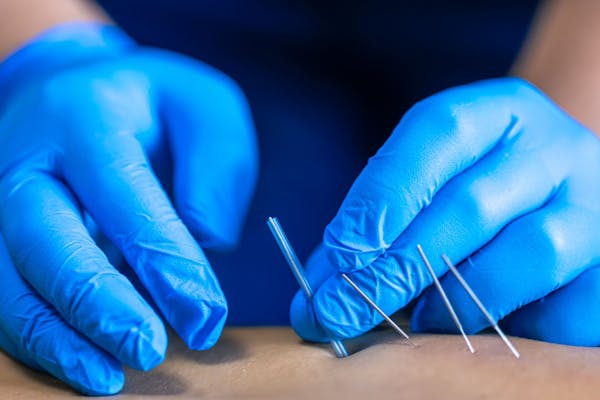Acupuncture physiotherapy is an integrative approach that combines traditional acupuncture techniques with modern physiotherapy principles. It involves the application of acupuncture needles to specific points on the body to promote healing, pain relief, and overall well-being.
How It Works:
Acupuncture Points: In traditional Chinese medicine, it’s believed that the body has specific points along meridians where energy flows (Qi). Acupuncture needles are inserted into these points to stimulate the flow of Qi and restore balance.
Physiotherapy Integration: In acupuncture physiotherapy, the treatment is often combined with physiotherapy techniques such as exercises, manual therapy, and education on posture and movement.
Procedure:
Assessment: A physiotherapist will first assess your condition, medical history, and goals for treatment.
Needle Insertion: Thin, sterile needles are gently inserted into specific acupuncture points on the body. The number of needles used and their placement depend on the condition being treated.
Stimulation: The needles may be manipulated manually or through electrical stimulation to enhance the effect.
Duration: The needles are typically left in place for 15 to 30 minutes while you relax.
Benefits:
Pain Relief: Acupuncture is commonly used to alleviate pain, including back pain, neck pain, joint pain, and headaches.
Improved Function: It can help improve range of motion, flexibility, and overall function.
Stress Reduction: Many people find acupuncture sessions to be relaxing and stress-relieving.
Enhanced Healing: Acupuncture can promote the body’s natural healing processes by improving blood flow and releasing endorphins, the body’s natural painkillers.
Conditions Treated:
Musculoskeletal Conditions: Acupuncture physiotherapy is effective for treating conditions such as osteoarthritis, tendonitis, and muscle strains.
Neurological Conditions: It may also benefit conditions like stroke rehabilitation, neuropathy, and multiple sclerosis.
Chronic Pain: Acupuncture can be helpful for managing chronic pain conditions such as fibromyalgia.
Risks and Side Effects:
Minimal: When performed by a trained professional, acupuncture is generally safe with minimal side effects.
Bruising or Soreness: Some people may experience mild bruising or soreness at the needle insertion sites.
Infection: Strict hygiene practices are followed to prevent infection.
Considerations:
Individualized Treatment: Acupuncture physiotherapy is tailored to the individual’s condition and needs.
Frequency: The number of sessions needed varies depending on the condition. A series of sessions may be recommended initially, followed by maintenance sessions as needed.
Combination Therapy: It’s often used in conjunction with other physiotherapy techniques for a comprehensive approach to treatment.
Conclusion:
Acupuncture physiotherapy combines the ancient practice of acupuncture with modern physiotherapy techniques to provide a holistic approach to healing and pain relief. It’s particularly beneficial for musculoskeletal conditions and chronic pain.

